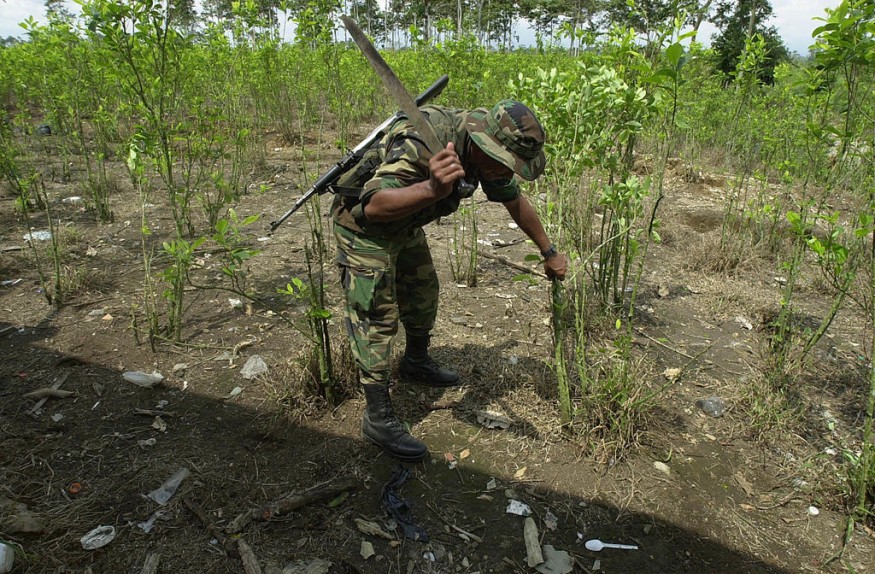Colombia Chops Coca Crop Region in 2020; Cocaine Production Still Increases, UNODC Says

The government of Colombia shrunk the land surface under coca cultivation by seven percent in 2020, but the country remained as the largest cocaine producer in the world, the United Nations Office on Drugs and Crime (UNODC) stated in their report, Wednesday.
World's Biggest Cocaine Producers
Based on UNODC, The country last year had 143,000 hectares of illegal coca plantations, which was cut down from 154,000 hectares of coca plantation in 2019.
However, according to Reuters, Pierre Lapaque, UNODC representative, shared during a press conference in Bogota that the cocaine production in Colombia continued to increase. Lapaque also said that despite the slash made in the area of the plantation, still, cocaine producers managed to end up with a higher coca leaf yield which had increased the production.
The UNODC representative also said during a presentation of yearly monitoring statistics, that the increase in production was because of advanced methods in coca farming. It includes sowing more productive varieties of coca, agricultural technical assistance, and replanting crops.
The information on the latest report of UNODC puts Colombia still on top of the list of the world's biggest producers of cocaine ahead of Peru and Bolivia. Cocaine is an illegal drug that is derived from the coca leaf that can grow easily in the region.
Moreover, the UNODC said that the production of cocaine hydrochloride was estimated at 1,228 metric tons in 2020. The number is eight percent higher compared to the record in 2019.
Meanwhile, Americans are considered the top consumer of Colombian cocaine. It is the reason why the United States government was at the forefront of the war on drugs. The U.S. is also a major funder of the war against cocaine producers in different countries.
In 2018, Colombian President Iván Duque Márquez started the fight against drug trafficking. The conservative president also made the war on drugs a priority for the Colombian government. The Colombian president also launched a plan to halve coca plantations by 2023. The record shows that in 2017, there are 171 hectares of coca plantations in Colombia.
Drug trafficking has long fueled the country's internal armed conflict, which has left more than 260,000 dead and millions displaced based on the government. Even the Colombian President emphasized during the presentation that the greatest enemy of peacebuilding in Colombia is drug trafficking.
Effects on National Parks and Indigenous People
Furthermore, the report also mentioned that close to half of Colombia's coca plantations were in protected areas such as national parks or indigenous reserves. Also, much of the plantations were located in the restive border area with Venezuela, where operations of armed groups and drug traffickers happen, Barrons reported.
In 2020 Colombian security forces confiscated 505 metric tons of cocaine. The country hopes to destroy the same number of hectares of coca crops this 2021. The government is working to restart aerial spraying of coca crops with the herbicide glyphosate, a product applied to the leaves of plants to kill both broadleaf plants and grasses. But the move is opposed by environmental groups and local communities as it also affects their livelihood.
RELATED ARTICLE : Mexican Cartel Activity Suspected in Largest Drug Bust in Los Angeles' Sheriff Department's History
WATCH: How Coca Leaves Become Cocaine | Trafficked with Mariana van Zeller -from National Geographic
Subscribe to Latin Post!
Sign up for our free newsletter for the Latest coverage!
















